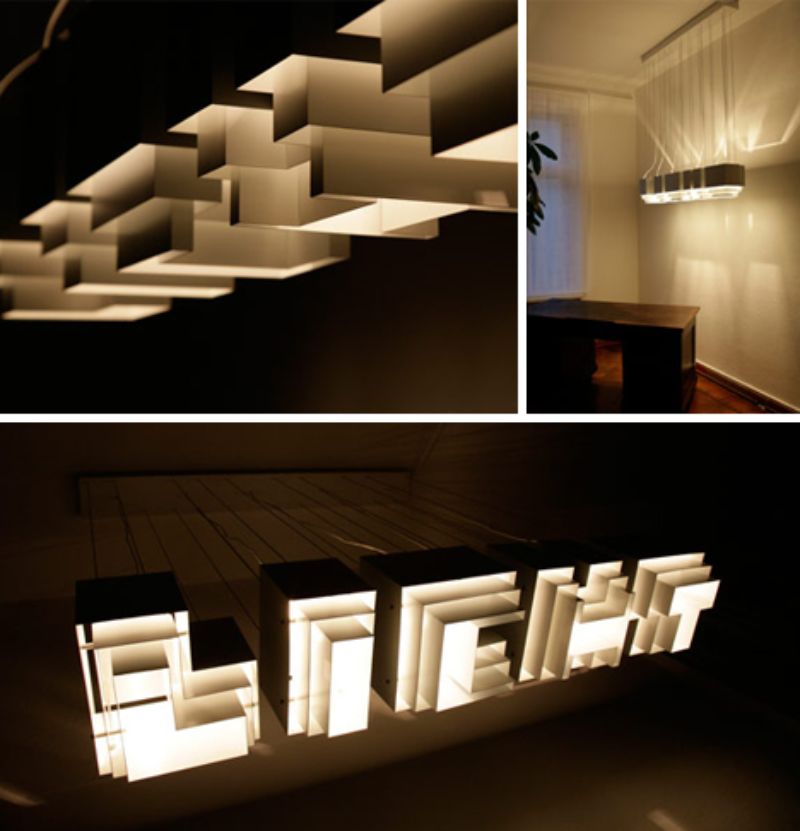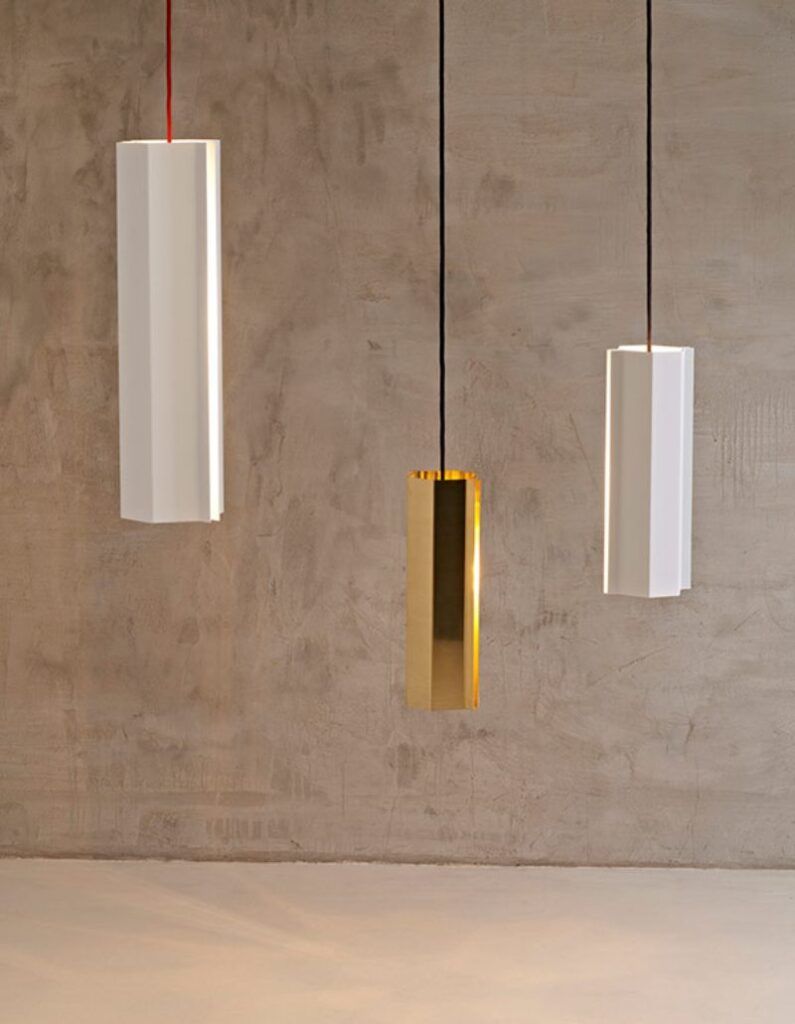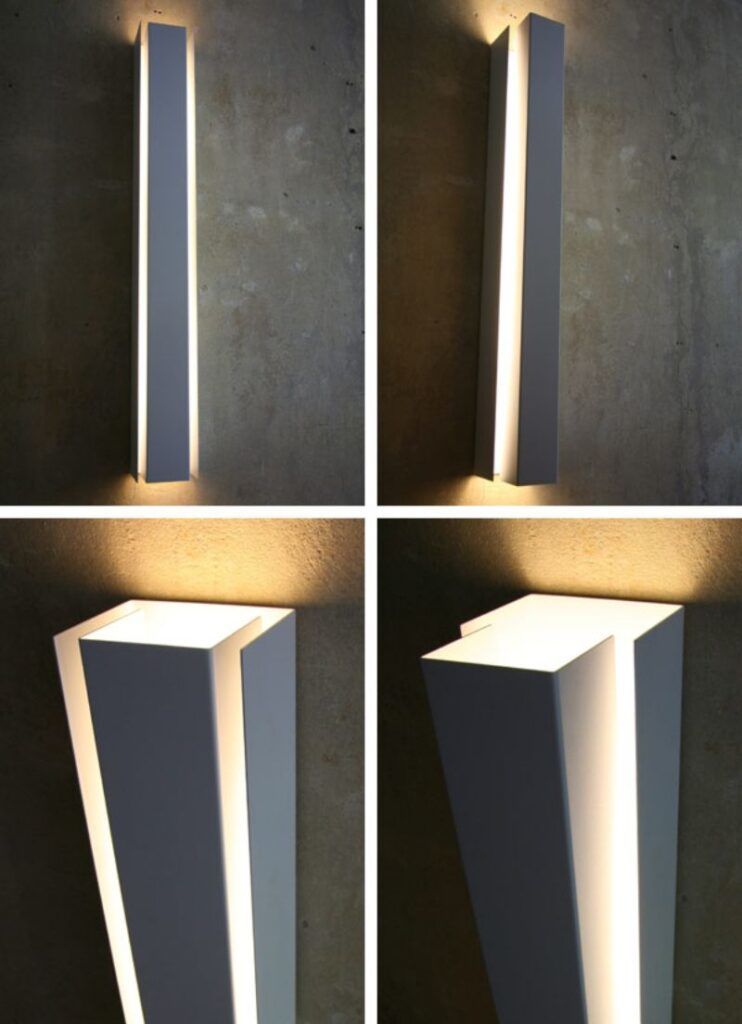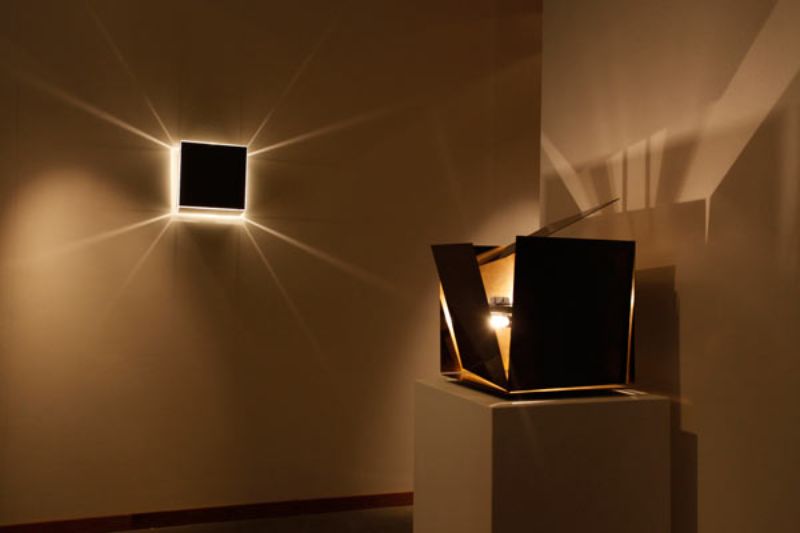Minimalist Geometric Lamps by Designer Robert Hoffmann Really Shine

It looks somewhat retro at first, but there is a postmodern message illuminated by the above pendant light – and no, the end of the ‘G’ is not missing: in German the word for light is ‘licht’. This series of geometric lamps by Robert Hoffmann is actually coursework for school, but would no doubt do well if they were to be for sale someday too.

In each designer lamp or set thereof, the designer takes simple materials – wire, sheet metal and a bulb – to create something that has depth and detail of shape and shadow that seem to go beyond the simple materials themselves.
Trapezium, above, is “a light-object for interior use. Construction and light-effects of the luminaire are just as simple as surprising. It consists of two identically folded trapezoidal sheet metals, reminding of a hexagon in the outline. A soft, wide light cone evolves at the top and bottom side. In contrast to that, the light pushes through the lateral gaps between the metal sheet halves and shows as thin streaks on the surrounding walls.”

Composed of two metal ‘U’ shapes, this one is particularly well-suited to mass production and easy assembly, yet looks extremely elegant and refined for being so easily and inexpensively made. One of the most notable things about this body of work as a whole is the repetitive use of simple, white-painted, flat and rectilinear pieces of metal – the same material and color each time, but with substantially different results.
It’s called the Two U, and as the designer explains, “A lamp sits between two u-profiles placed inside one another. The upcast of the profile increases the light deficiency.”


About designer Robert Hoffmann
“German designer Robert Hoffmann was born in Berlin in 1979. He studied Architecture at the Technical University in Berlin from 2001 to 2002, before switching his focus to design. He graduated from the Hochschule für angewandte Wissenschaft und Kunst in Hildesheim, Germany in 2008 with a degree in metal design. He founded his own studio later that year after moving back to Berlin, where he continues to live and work.”




